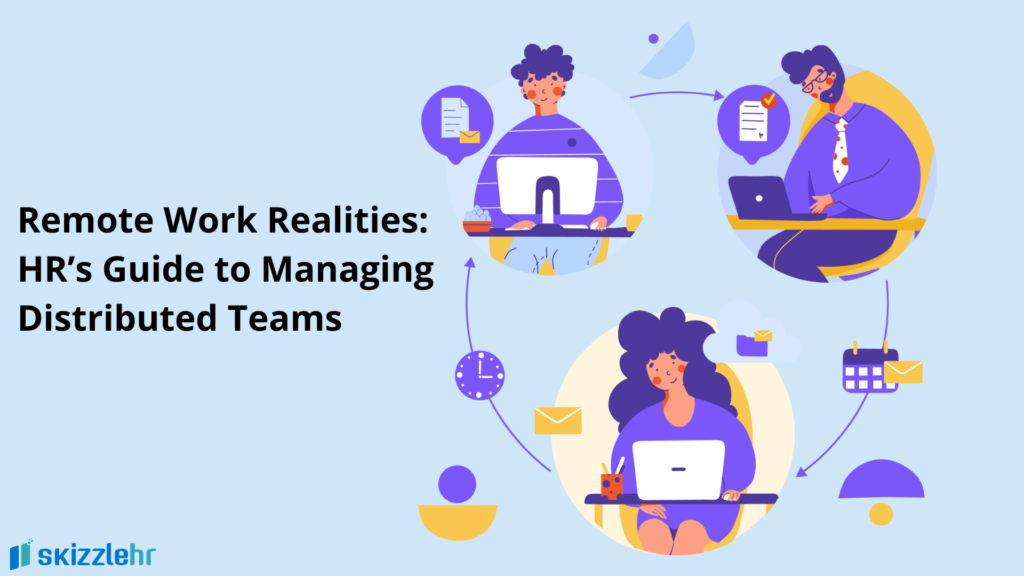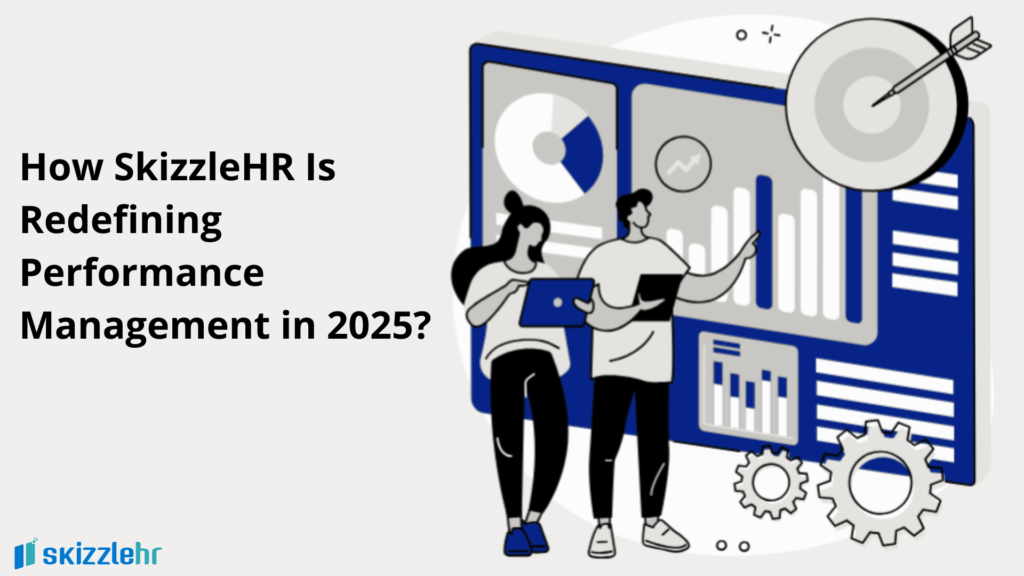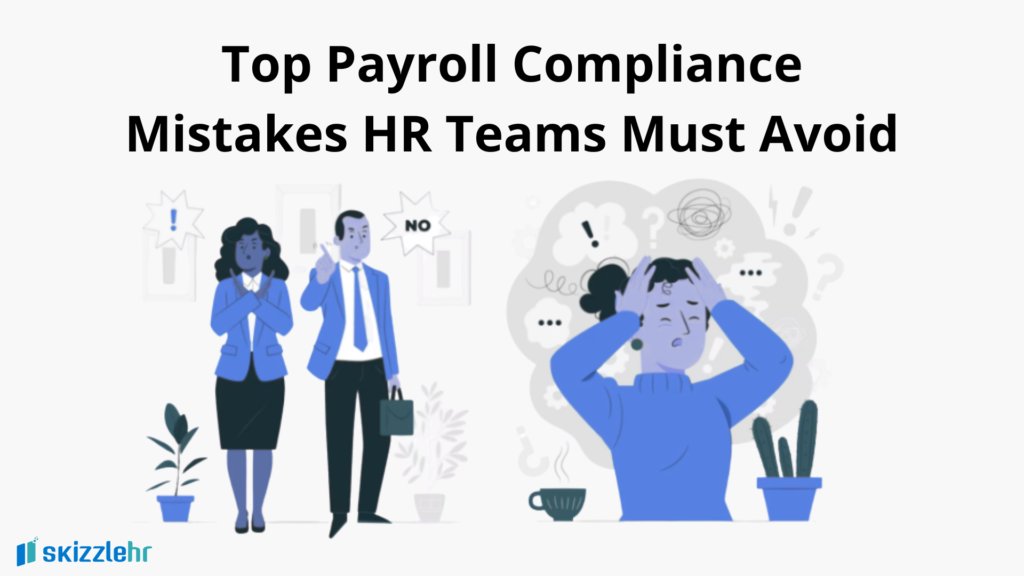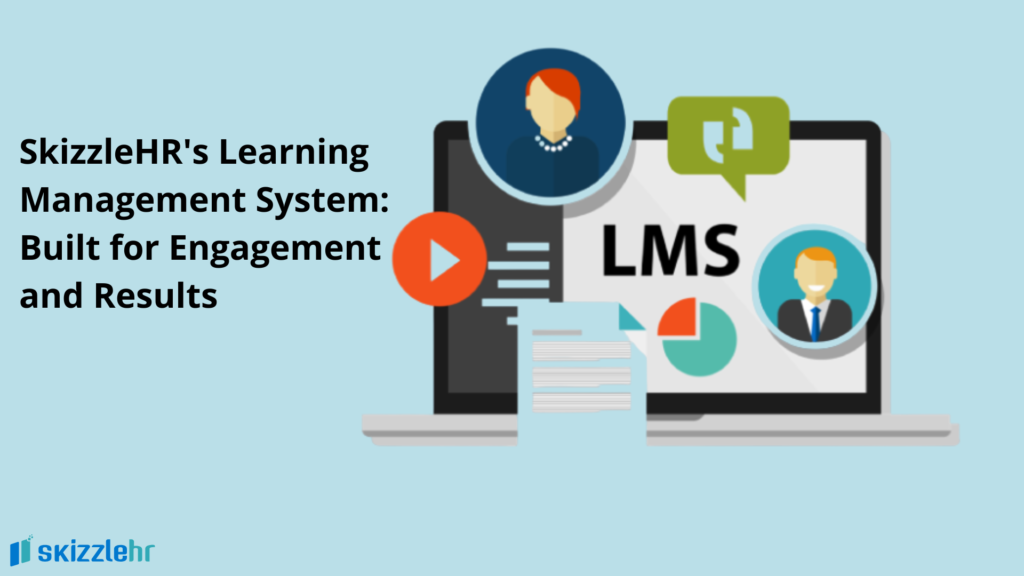Remote Work Realities: HR’s Guide to Managing Distributed Teams

Remote work is no longer an emergency response to a global event—it’s a strategic advantage. Organizations across industries are embracing distributed models, with hybrid workplaces becoming the norm. But managing remote employees isn’t as simple as sending people home with laptops. It requires thoughtful planning, strong leadership, and advanced virtual HR strategies. For HR professionals, this shift brings both challenges and opportunities. From maintaining engagement to ensuring compliance and productivity, HR teams are now at the forefront of reshaping how businesses operate in the remote age.
In this guide, we’ll explore the realities of remote work, key challenges, proven HR strategies, and how smart HR software like SkizzleHR can transform the experience for both employees and employers.
Why Remote Work Is Here to Stay?
According to various global surveys, over 70% of employees prefer flexible working arrangements, and nearly 60% would consider leaving a job that doesn’t offer hybrid options. For businesses, hybrid workplace reduces operational costs, expands the talent pool, and boosts employee satisfaction.
However, maintaining productivity and culture in a distributed setup is not automatic—it requires intentional design. HR plays a vital role in crafting systems that support this transition.
Challenges HR Faces in Remote & Hybrid Workplaces
Managing a hybrid workforce is not just about flexibility, it’s about consistency, structure, and visibility. Below are the major challenges HR leaders encounter:
1. Lack of Real-Time Visibility
Without physical presence, it’s difficult to track employee activity, break times, and work hours accurately. This leads to uncertainty around attendance, performance, and compliance.
2. Communication Breakdown
In remote setups, casual communication and hallway conversations disappear. This often leads to misalignment, information silos, and slower decision-making.
3. Onboarding & Integration Difficulties
Remote onboarding can feel impersonal if not handled well. New hires may struggle to understand company culture or build relationships without face-to-face interactions.
4. Employee Engagement & Retention
Remote workers often feel disconnected or isolated. HR teams must work harder to create meaningful engagement, recognize achievements, and build a sense of belonging.
5. Time Zone & Flexibility Conflicts
When teams work across geographies, scheduling meetings and coordinating tasks becomes tricky. Asynchronous communication must be balanced with live collaboration.
6. Performance Evaluation Gaps
Measuring performance remotely is a challenge, especially if traditional metrics are no longer relevant. HR must adopt more outcome-based assessments.
Essential Virtual HR Strategies for Distributed Teams
To ensure long-term success in a hybrid workplace environment, HR must go beyond reactive fixes and implement robust, scalable strategies. Here’s how:
1. Build a Remote Work Policy
A formal policy sets expectations for remote etiquette, communication standards, work hours, data security, and device usage. It also outlines support systems for employees, such as mental health resources or technical assistance.
2. Digitize the Entire Employee Lifecycle
From recruiting and onboarding to training, appraisals, and exits—each stage must be digital. This ensures consistency, improves documentation, and enhances employee experience.
3. Embrace Cloud-Based HR Platforms
Centralized platforms enable employees to apply for leave, mark attendance, access documents, and communicate—all from one place. This reduces administrative burden and supports a paperless, seamless workflow.
4. Focus on Outcome-Driven Performance Management
Set clear KPIs and use project-tracking tools to monitor progress. Regular check-ins, 360-degree feedback, and digital performance dashboards keep employees aligned and accountable.
5. Encourage Digital Engagement Initiatives
Virtual team-building sessions, employee newsletters, e-learning opportunities, and digital recognition programs boost morale and strengthen team bonds.
6. Monitor Wellbeing & Workload
Introduce wellness surveys, flexible scheduling, and encourage a culture of work-life balance. Mental health support and burnout prevention must be part of your HR strategy.
Tools HR Needs to Power the Hybrid Workplace
A successful virtual HR strategy relies on technology that brings people together and enables efficient operations. HR teams should invest in tools that offer:
- Real-Time Attendance & Geo-Tracking
- Mobile Self-Service Portals
- AI-Enabled Task Automation
- Digital Document Storage
- Integrated Payroll & Compliance
- Shift & Roster Management for Hybrid Teams
- Custom Workflows & Approvals
- Analytics Dashboards & Employee Insights
With the right tools, HR becomes the glue that holds the distributed team together ensuring every process, from hiring to retiring, is optimized for the modern workplace.
Empower Your Remote Teams with SkizzleHR
At SkizzleHR, we understand the complexities of managing remote and hybrid teams. That’s why we’ve built a unified HR platform tailored for the future of work. Whether you’re a startup scaling across cities or a large organization with employees in multiple time zones, SkizzleHR makes it easy to manage:
- Location-based attendance tracking
- Mobile-first Employee Self Service (ESS)
- Cloud-based documentation and approvals
- Automated payroll linked to attendance
- Smart analytics for workforce insights
- Smooth onboarding and offboarding, remotely
Remote work should feel connected, organized, and empowering—and with SkizzleHR, it can.
You might also like
Start Growing with SkizzleHR
Our team is ready to guide you through an interactive demonstration, tailored to your business needs.
Request a demo


